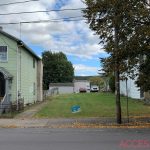BY LEAH ZERBE
Many Pennsylvanians anxiously awaited the arrival of ruby-throated hummingbirds this spring.
Most of the birds overwinter in Central America before heading to northern breeding ground, and hummingbird migration is now widespread throughout North America, with more than 1,000 new sightings reported, according to Journey North. Most of the first arrivals are the brightly colored males staking claim to breeding territories.
Considered a medium- to long-distance migrant, ruby-throated hummingbirds can fly more than 1,200 miles without a break during migration. A hummingbird’s heart beats up to 1,260 times a minute, meaning it possesses one of the highest metabolic rates of any animal. That requires lots of fuel. And by replacing turf lawn or spots in our garden with the plants they need to survive, we can play a big part in ensuring their success.
Engage in community science
Whether you’re a teacher, student, veteran birder or newbie, you can contribute to important migratory bird research. Create an online account at JourneyNorth.org and then go to journeynorth.org/tm/humm/SpringWatch.html to report your first hummingbird sighting of 2021.
This spring, Journey North is asking folks to report the first hummingbird they spot at a nectaring flower. If you can, include the name of the flower, too.
This type of data helps scientists better understand the health of migrating populations.
Hummingbirds’ favorite plants
Of course, you can put out sugar feeders for hummingbirds, but you know what’s even better? Planting native species these birds love.
Many scientists believe up to 19 native plants co-evolved alongside ruby-throated hummingbirds in the Eastern United States, creating the perfect partnership. The plants attract hummingbirds with the nectar-rich red or orange, long, tubular flowers that perfectly fit the shape of a hummingbird’s bill. And the payoff? Hummingbirds inadvertently collect loads of pollen on their beating wings as they hover over plants, spreading pollen from plant to plant to ensure more flowers (and more nectar). Our native ruby-throated hummingbirds offer pollinator services on par with European honey bees.
Here are some of the best native perennial plants to include in your gardens:
Wild columbine (Aquilegia canadensis): The ruby-throated hummingbird’s spring migration coincides with the flowering of wild columbines, making it a valuable nectar source as these beloved birds return north to breed. This highly adaptable indigenous plant features showy flowers and reaches a height of about 2 feet. It grows in dry, average or moist soils in partly sunny to shady spots, as long as the soil is well-drained. It’s also a host plant for the columbine duskywing caterpillar, and hawk moths love to visit these plants, too.
Cardinal flower (Lobelia cardinalis): This stunning swallowtail butterfly and hummingbird magnet grows 2 to 4 feet high and provides a crucial nectar source in the later weeks of summer. It prefers shaded to partly sunny spots but requires consistent moisture. That makes sense, since it occurs naturally in wet meadows and at the edges of ponds and creeks. This is a short-lived species, so let the seed heads develop and drop to ensure you have cardinal flowers for years to come.
Scarlet beebalm (Monarda didyma): Growing 2 to 3 feet tall, this species thrives in full to part sun and rich, moist soils. It also was an important plant to Native Americans, who used it for a number of things, including tea. Keep an eye out for frequent visitors, such as bumblebees and swallowtail butterflies, in addition to hummingbirds.
Wild bergamot (Monarda fistulosa): If you’re looking for an easy-to-grow spreading plant to create a summer pollinator party in your space, this is it. This forgiving plant vigorously spreads and is the perfect pick for sunny, well-drained, fertile soils, but it also tolerates drought, and deer and rabbits tend to ignore it.
Trumpet honeysuckle (Lonicera sempervirens): Unlike invasive honeysuckles that cause major ecological and economic damage in our region, this one actually belongs here. This twisting, climbing vine can reach 3 to 20 feet long and also develops a red fruit berry. It prefers sunny, moist, well-drained soil but will also tolerate drier sites and part shade.



